We arrived in Yangon early evening yesterday, and it didn’t take long to settle very comfortably into our swish hotel, The Strand. It is definitely one of the poshest places we have ever stayed, and it would be far too easy to become accustomed to this luxurious way of life! Due to the contacts of the friends we are travelling with, the General Manager of the hotel bought us welcome drinks in the bar, and there was a bottle of Sauvignon Blanc chilling in an ice bucket in our room as a gift.
We are staying in a suite on the top floor with views of the river, and our floor has a butler – he (sometimes, she) sits outside the lifts on the gigantic landing with its amazing central “well” down to the ground floor, waiting to be of service to any guest as they pop out of their door. It’s quite a novelty having a butler; we hand in our key whenever we leave the room, and it’s rushed back to us the second we step out of the lift (our lady butler just goes straight to the door and opens it for us!). The butler also personally checks to see if we have any laundry that needs doing, and happily ensures that it will be done by the afternoon even though we have missed the 9am deadline by half an hour. Not at all shabby!
There are no ATMs in Myanmar (for tourists), and except for The Strand, nowhere takes credit card. So there were three different visitors from three different companies here in the foyer when we arrived waiting to collect our final payments for our cruise, our chain of hotels we are using for our other Myanmar stops, and our flights. Glad to get rid of all that cash!
Our arrival in darkness last night meant we didn’t get to see anything of the city. The only thing that really took our eye was the Shwedagon Paya – it’s golden spire flashing its bling at us between buildings as we drove to our hotel. We went out to dinner at a place around the corner, Monsoon Restaurant, which is apparently one of the best places in Myanmar to eat, and it only cost us $10 each, including wine, and it was a feast. Upstairs there was a party going on with some pretty shocking karaoke; it really put our teeth on edge. The city doesn’t ‘stay open’ like so many other big cities in the world, and all shops were closed and people on their way home by 9pm. We walked back to our suite in The Strand hotel, shared some cognac with our friends and retired to bed.
We had a guided tour of Yangon today, all decked out in an airconditioned van for the four of us. Our itinerary was a little bit rushed, but I think we managed to get all of the ‘must see’ items done. The first thing that threw me about Yangon was finding out that it is no longer the capital of Myanmar. In 2005, the military government began building a new capital 320 km north of Yangon, and in 2006 announced that its name would be Naypyidaw, but they are still working on completing its construction. Doubt that any of the embassies will move there.
The first stop of the day was a drive past Aung San Suu Kyi’s house. This is a wonderful example of how times have changed, even very recently. The 2011 Lonely Planet advised to be discreet and drive on by without really stopping. However, our guide, who assured us he was not going to risk his tourism licence for doing the wrong thing, told us that it was fine to stop the car and get out and take pictures. He must have been right, because there were about 8 people already gathered across the road to get a good shot. This is obviously no longer an issue with the military! The house is on a very busy road, not at all the impression you get from the film, The Lady, and all you can see is a long, cream wall topped with razor wire…and a large photo of her father, the assassinated ‘father’ of modern Burma (he was instrumental in bringing about independence from Britain).
We continued our tour with the National Museum as stop number two. The whole place looks a bit like an old country civic centre, with the wooden cabinets, bad lighting and poorly labelled displays. If it wasn’t for our guide, I am sure we would’ve abandoned it completely before getting to the really impressive parts – like the throne room! Now, THAT was a delightful surprise! The throne itself was in its original state; teak wood covered in gold leaf, regal and imposing, just as a throne should be. Although called a ‘throne’, it’s not a ‘throne’ as we would know it – there is actually nothing for the king and queen to sit on, it’s more a raised platform with impressive doors (they climb the stairs behind the closed doors and make a big entrance…before sitting on the floor!). This Lion Throne is the only remaining one of the original eight thrones that once existed in Myanmar. Throughout this floor, the opulence is apparent everywhere you look, with jewel encrusted EVERYTHING on display – from the clothes to the fruit bowls!
Botataung Paya is one of the ‘big three’ payas in Yangon. These structures (also known as stupas), usually house the ashes of the dead. This particular one is said to house hair relics of Buddha. For a 6 month period, this paya was said to hold all 8 hairs of Buddha before they were distributed elsewhere. It copped a bomb hit (from allied forces) in 1943 during the war, but was rebuilt afterwards. However, the difference between this paya and other stupas (which are usually solid) is that you can actually walk through this one, which is like walking through a hall of mirrors maze at a carnival, with its corridors formed in the points of a star.
The majority of men and women in Myanmar still wear traditional dress, the longyi – men in their dark checked skirts and white shirts (or in the case of young men, trendy t-shirts on top), women in floral patterns. It is completely refreshing to not see a complete embracing of western fashion (although the young men’s hair styles were pretty trendy! Quite a few ‘Justin Beibers’, in fact!).
The traditional makeup of Myanmar is called ‘thanaka’ – pale cream thin paste on the cheeks and sometimes nose, chin and forehead of women, girls and some young boys. Burmese men apparently find it very attractive. The make up itself has to be bought fresh every couple of days, as it comes from the ground bark of several different types of trees found in abundance in Myanmar. It has been used for over 2,000 years and has a number of benefits; apart from being traditionally attractive, it also provides a cooling effect and protects from sunburn, and also helps remove acne and promotes smooth skin.
The traffic in Yangon is quite crazy in peak period, common to many cities, I know, but made even worse due to the strictly enforced laws that prevent motorcycles or mopeds from entering the city (which means that there are even more cars on the roads than there would otherwise be). Apparently they were outlawed in early 2000’s by some politicians paranoid of an attack on political vehicles by a motorcyclist. Interesting…
‘Tea shops’ are scattered along most busy streets and are always packed with locals at breakfast time. These shops are not in buildings, but rather are gatherings on squat plastic stools or chairs (of child-like proportions) where people congregate for the important ritual of taking tea. In Myanmar, locals eat ‘out’ for breakfast more than they do for lunch or dinner, and all of these meals happen a lot earlier than in most countries (lunch by 12pm, dinner by 5 or 6pm – perfect for nannas like me who prefer to eat early!!).
In the afternoon we headed to 70 year old Bogyoke Aung San Market (Scott Market is its old British name), where over 2,000 stalls sell every possible thing you require from fresh fish (still wriggling) and produce to artworks, jewellery, handicrafts and clothing. We checked out an impressive art gallery, exhibiting a local artist by the name of Tim Maung Win. His work was very exciting and compelling, and one piece in particular kept drawing us in – a close up of a young girls face with deep, dark eyes. However, it was a tad too big for anywhere in the house (and after I while I think she would spook me out, her gaze following every move!). We spent another hour wandering through the narrow alleyways of wares and encouraging voices, trying to entice us into a purchase.
Shwedagon Paya is the magnificent temple that was flashing us teasing gold glimpses in the darkness between buildings on our way to the hotel last night (very Eiffel Tower a la French Kiss!). It is very bright gold in the day and shimmers various shades of orange and red as the sun fades, so sunset was a magical time to visit. It is THE Buddhist temple of Myanmar; the one that all Buddhists in the country wish to visit in their lifetime. It is a place of worship and a place to gather in community. The colours and vibrancy, in architecture and clothing, are the perfect setting for both the contemplation and the socialising of these people. It is easy to understand the fondness and significance of this building to the people.
Our evening was spent at one of the finest restaurants we have eaten at, worldwide. This gem was called Le Planteur, owned by Swiss husband and wife team – Felix and Lucia Epissier – she is the front of house, he is the chef (who had 2 Michelin stars in Europe before moving to Myanmar), and they have been at Le Planteur for three years. It was one of the most atmospheric and romantic dining settings I’ve experienced – gorgeous outdoor seating on the manicured lawn in the fairy-light-lit garden, tables a decent distance apart, ducks waddling and quacking across the grass, candles in every possible direction, and the perfect music at the perfect volume underscoring the whole evening. I realised when I sat down that I forgot to put on bug spray. On asking the waitress if they had any, she told me that I wouldn’t need any – the garden is treated twice a week to kill the bugs, and there was a mosquito coil alight under the table. Worked perfectly; not one nibble of the insect kind all evening.
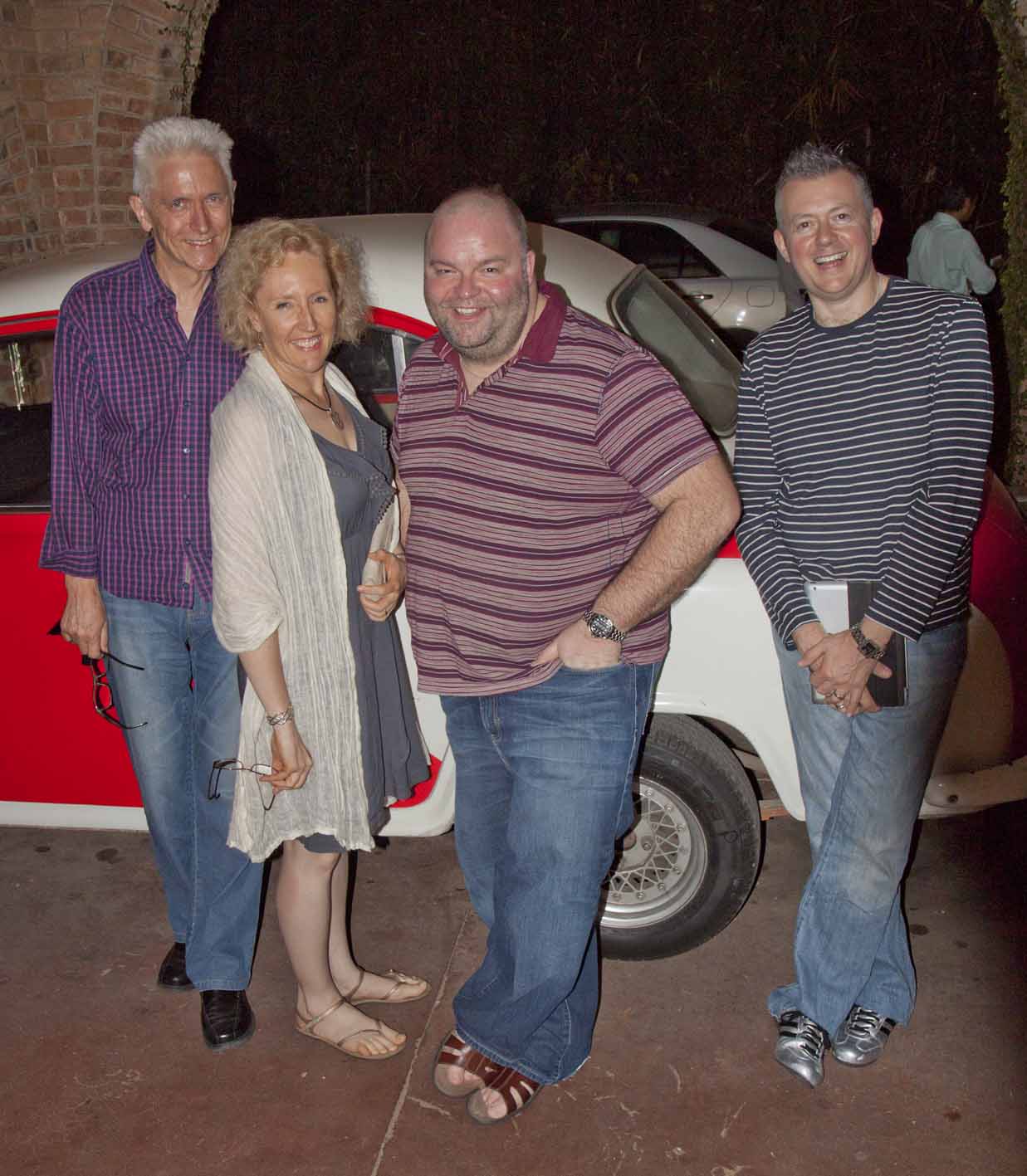
Four friends at Le Planteur Restaurant – about to be given a ride home in the vintage Morris Oxford!
We received complimentary hors d’oeuvres, as well as an amuse-bouche, then we had 2 starters each to share: red tuna and salmon sashimi salad with ginger and lemon (silken and flavoursome); grilled asparagus with orange (fresh and crisp); agnelotti with sun-dried tomatoes, olives and Myanmar fetta (clear, dynamic flavours); truffle filled ravioli and creamy truffle foam (with the perfect amount of truffle). Both pasta dishes were precisely al dente – and the filling was scrumptious! We also received a complimentary tray of petit fours, which, while usually made with marzipan, were much more tasty and varied – more like baby desserts! Even at this high end of the dining spectrum (and thanks to our friend’s influence and the resulting discount ‘forced’ on us by the owners!), the meal only cost us $50 USD per person – and we could not have fit in another bite!
Our travel agent on this trip was Kyaw Khaing at One Stop Myanmar. He handled all of our internal flights, transfers and tours. We were very impressed with his efficiency, helpfulness, excellent advice, friendliness and price!
BBC INTERVIEW WITH AUNG SAN SUU KYI
Click on any image below to view as a gallery
- Four friends at Le Planteur Restaurant – about to be given a ride home in the vintage Morris Oxford!
- Garden dining at Le Planteur Restaurant, Yangon
- Shwedagon Paya in Yangon…in all it’s magnificence!
- Not so much into the worshipping
- A blessing for a healthy baby
- Statuary at Shwedagon Paya, Yangon
- Lighting candles at Shwedagon Paya, Yangon
- Worshippers at Shwedagon Paya
- Colour fading from the sky at Shwedagon Paya, Yangon
- Hanging on!
- Reclining Buddha…on a massive scale!
- Nic & John at Inya Lake in Yangon, Myanmar
- Downtown Yangon
- Fast food in Yangon
- Devotees
- Banana stall
- Reclining Buddha amongst the masses
- Market stall in Bogyoke Aung San Markets
- Miniature Buddhist nuns collecting donations from market stall owners in exchange for a blessing
- Padonmar restaurant for lunch
- ‘Taxi’ service
- Early morning snacks
- The pursuit of the pale is strong in Myanmar
- Aung San Suu Kyi’s House in Yangon
- The lobby of The Strand, Yangon

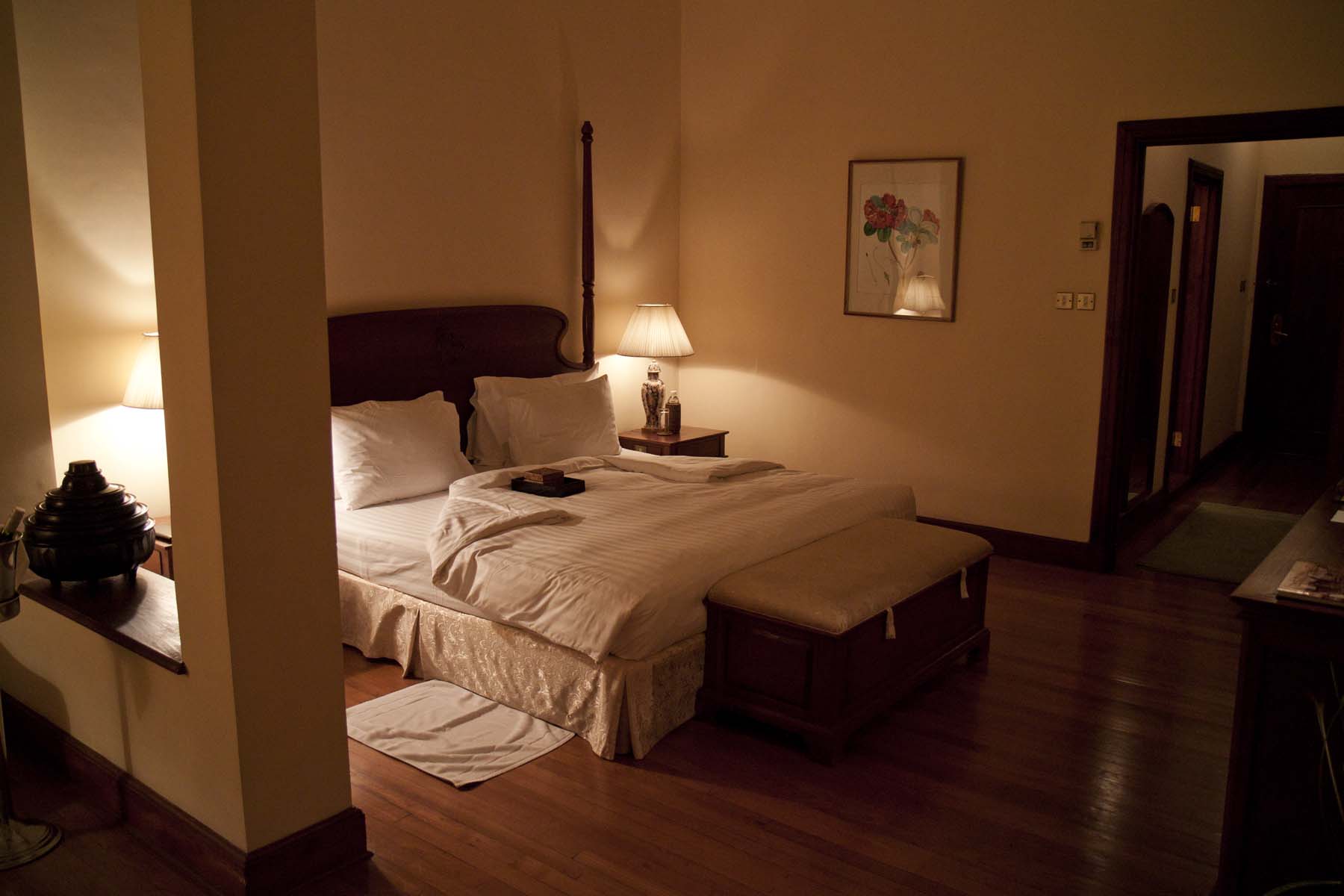
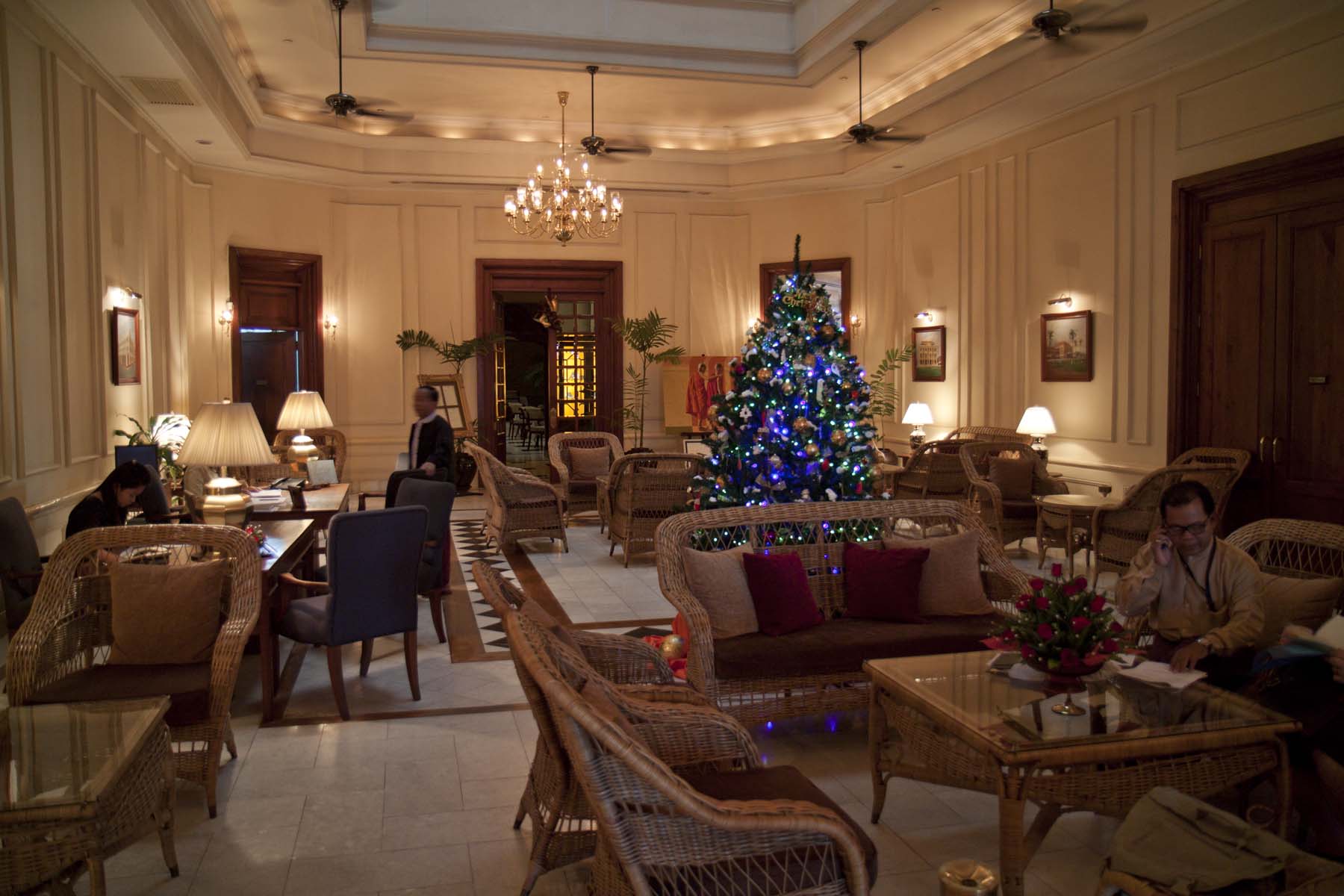
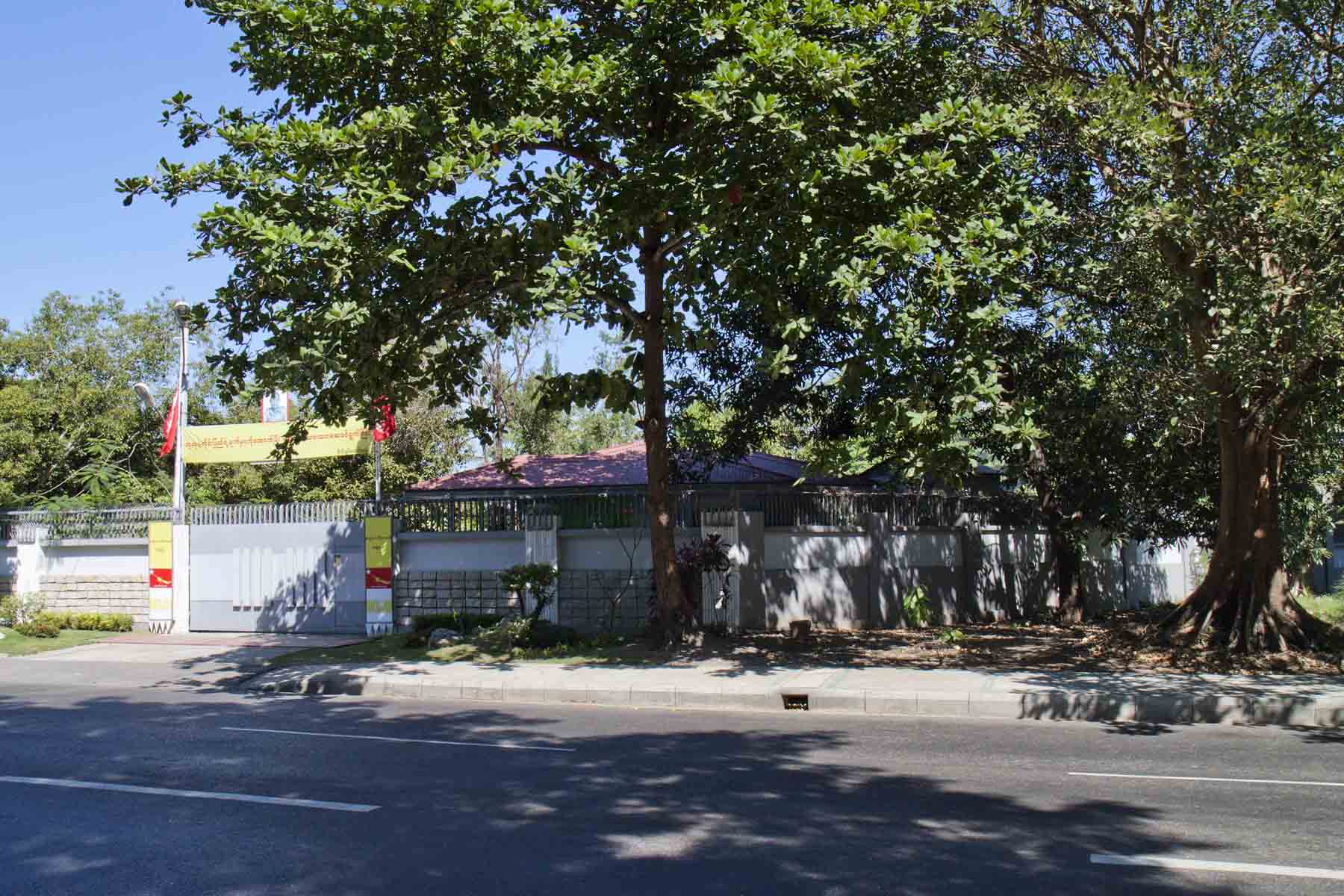
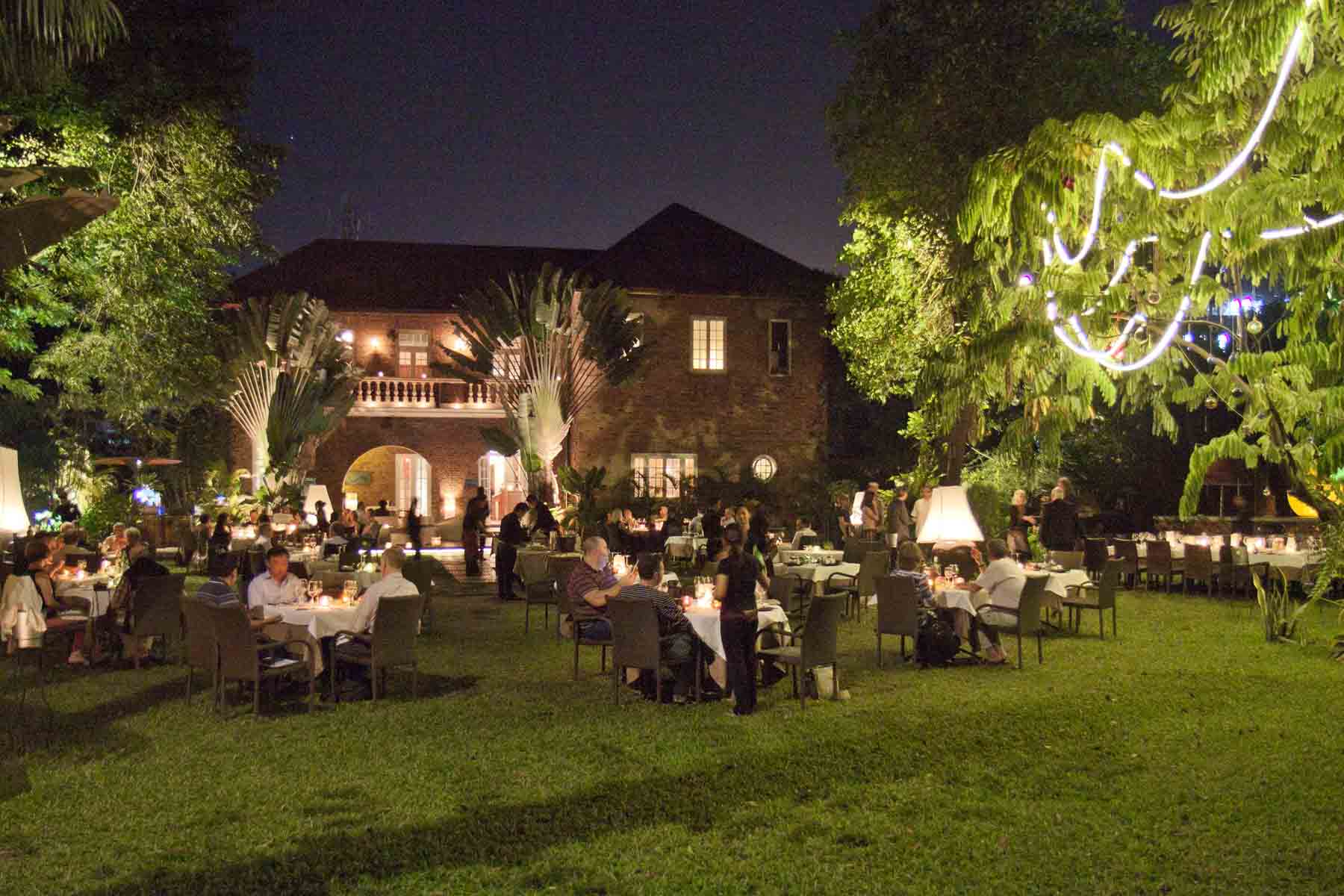
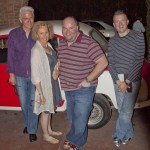
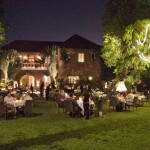
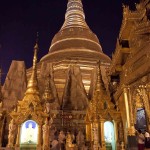
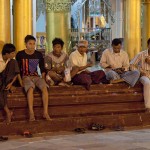
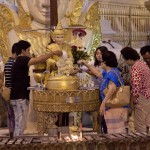
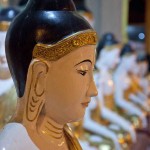
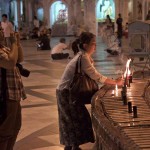
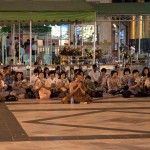
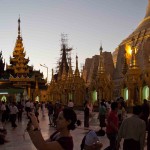
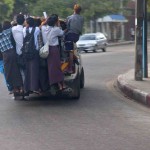
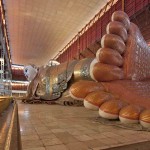
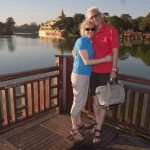
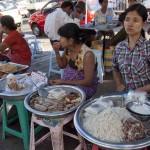
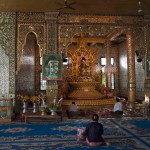
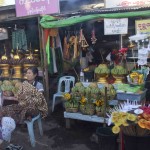
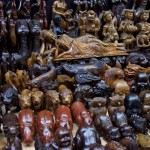
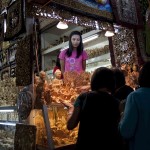
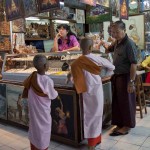
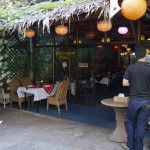
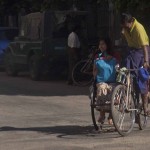


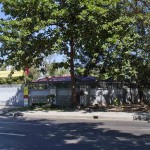
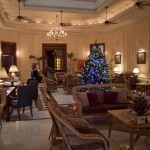
Your words about your meal at Le Planteur reminded my of a dinner we had outside one night in a wonderful candlelit garden with jazz piped through the trees in Karaköy, Turkey. When it all comes together, it’s the best way to dine! X